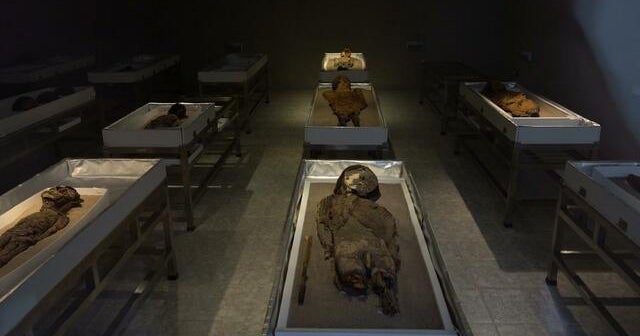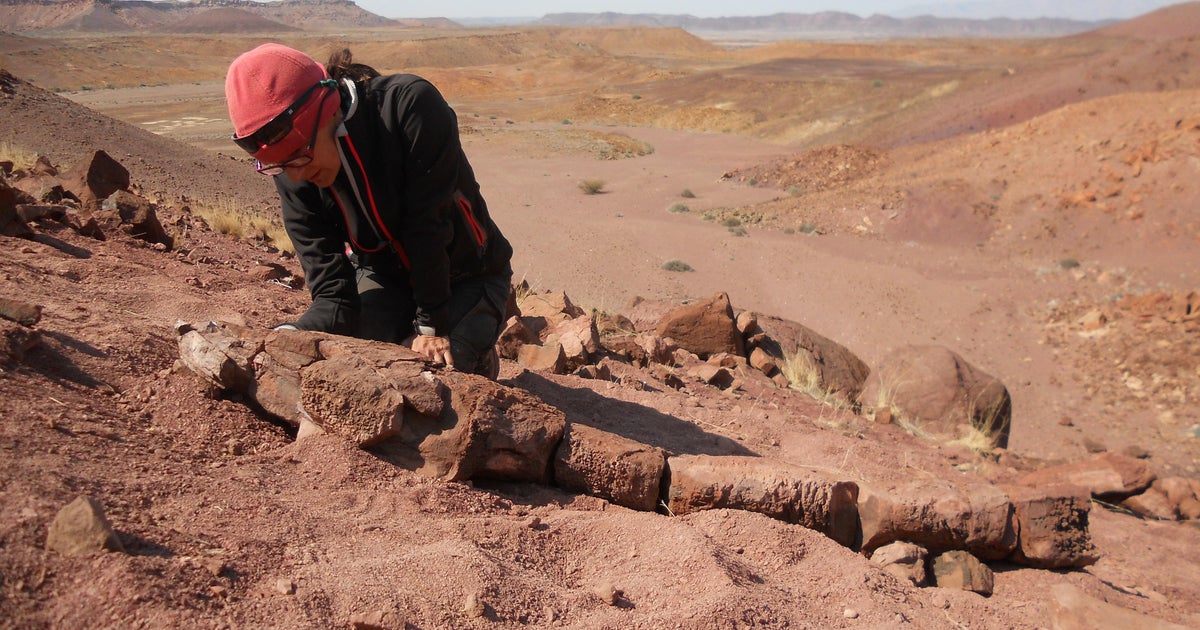CBS News
Historic cicada event underway in parts of U.S.

Watch CBS News
Be the first to know
Get browser notifications for breaking news, live events, and exclusive reporting.
CBS News
These are the best and worst cities for new college grads

While it’s hard for young people to resist the appeal of large cities and their hefty paychecks, smaller cities can sometimes offer more job prospects and overall affordability, making them better picks for new graduates.
For those reasons, the top city for new degree holders isn’t New York or San Francisco, or any other similarly popular metro area whose main drawback is its high cost of living, according to a new study from the ADP Research Institute (ADPRI). Taking into account a number of factors, including average wages, overall affordability and hiring rates, Raleigh, North Carolina, takes the No. 1 spot on the management services company’s list of best places for young graduates to start their careers. For its ranking, researchers looked at ADP data on more than 4 million 20- to 29-year olds at more than 27,000 U.S. employers, from January 2019 through April 2024.
“The basic idea is these are the questions new grads ask when planning their job search. They ask, ‘Where am I likely to find a job? What kind of salary will I earn?’ and ‘How far will it go?'” said Ben Hanowell, ADPRI’s director of people analytics research. “We put the three things together to find out where they can find the best combination of wages, affordability and robust hiring.”
Researchers at ADPRI found that Raleigh is relatively affordable, offers wages above the 80th percentile, and has the best hiring rate for likely new graduates of all the metro areas studied. Nicknamed the research triangle, Raleigh sits between three universities and is home to roughly 300 science and technology companies.
Great average salary, but can I even get a job?
The study takes into account that in some cities, though young workers could command higher wages, job opportunities are fewer than in other places and the cost of living is high, meaning that their salaries wouldn’t take them very far. As a result, these types of cities were deemed less desirable than those with decent salaries, but plentiful job opportunities for workers with less experience and relatively low costs of living.
“There are metro areas where you could command high wages as a recent grad, but they’re not affordable and hiring isn’t robust, so that’s the trade-off you’re making,” Hanowell said.
As an example, he pointed to Seattle, Washington, where wages are higher than 87% of the 55 biggest U.S. metro areas, but has a low hiring rate compared to other cities and is relatively unaffordable.
“The median wage is an estimated $56,000, but once that’s adjusted for the cost of living, it feels like $49,000. That’s one way to look at these trade-offs,” Hanowell said.
By contrast, Tucson, Arizona, has a hiring rate that’s greater than more than three-quarters of other metro areas, and is also more affordable than 84% of cities. “That’s the opposite end of the trade-off,” Hanowell said.
What’s the sweet spot?
To be sure, the most suitable city for a new graduate depends on their individual preferences. For example, one individual might be willing to take a chance trying to land a job in a metro area that’s expensive and has a low hiring rate, but where they can eventually command a high wage.
“They could think of the job they land as a stepping stone to greater things,” Hanowell said. “Whereas another grad might care about affordability to start building their savings early, or they are risk-averse and want to know that the place they’re going is a place where they can find a job.”
Surprises among rankings
When wages, affordability and hiring rates are considered, four metro areas stand out as the most promising places for young grads to begin their careers, according to ADPRI data.
“What’s surprising is these areas are not the traditional tech hubs or financial hubs you might think about for college grads,” Hanowell said.
Lower-ranked cities were mostly dinged in the wage and job prospects category. While they may be relatively affordable places to live, wages and hiring rates are low. Take Rochester, New York, for example, which has the lowest hiring rate of all 55 metros for likely college graduates. Although its wages are in the 13% percentile among metro areas, and it’s more affordable than nearly 70% of locales studied, its lackluster job prospects make it undesirable.
Here are the top 10 best and worst cities for new graduates, according to ADPRI.
Top 10 best cities for new graduates
- Raleigh, North Carolina
- Baltimore, Maryland
- Austin, Texas
- Atlanta, Georgia
- Charlotte, North Carolina
- New York, New York
- San Francisco, California
- Cleveland, Ohio
- Nashville, Tennessee
- Indianapolis, Indiana
Top 10 worst cities for new graduates
- Rochester, New York
- Virginia Beach, Virginia
- New Orleans, Louisiana
- Fresno, California
- Portland, Oregon
- Oklahoma City, Oklahoma
- Hartford, Connecticut
- Memphis, Tennessee
- Seattle, Washington
- Salt Lake City, Utah
Click here for the full rankings.
CBS News
These cannibal baby sharks eat their siblings in the womb

Watch CBS News
Be the first to know
Get browser notifications for breaking news, live events, and exclusive reporting.
CBS News
What will happen to the price of gold if inflation hits 2%?

Getty Images
With rampant inflation over the past couple of years, the Federal Reserve quickly raised interest rates and has held them steady for the past year. Meanwhile, gold prices have been strong recently, with the price of gold per ounce hitting a record of over $2,400 in May. Although gold prices have come down slightly since then, they’re still up over 20% in the past year. Meanwhile, inflation has been showing signs of moderating recently too, although it could still be a while until it reaches the Fed’s 2% target.
If that happens, what could it mean for the price of gold? In some ways, high inflation could help the price of gold, as the precious metal is often purchased to try to hedge against inflation.
See how much a gold investment could cost you here now.
What will happen to the price of gold if inflation hits 2%?
Inflation is only one of multiple factors that can (and have) shaped the price of gold. So, even if it falls, gold could still rise in value for other reasons.
At the same time, high interest rates that are used to try to tame inflation can temper the price of gold, as high interest rates give investors an attractive option for essentially risk-free returns, like by buying Treasuries or even keeping money in a high-yield savings account.
So, some think that gold prices could fall as inflation drops to 2%.
“If and when that occurs, that could potentially deter some demand in gold and might lower the price,” says Alex Ebkarian, COO and co-founder of Allegiance Gold, a gold investing company.
“However, it’s a mistake to just look at the Fed’s reported inflation because it only measures year over year. Looking at the last three-year cumulative compound impact of inflation continues to be evident at the grocery stores and reflective on the price increase of gold,” he adds.
So, in that sense, with gold often being seen as a store of value, gold prices could potentially remain strong even if inflation hits 2%, at least in the beginning of that low inflation period.
Learn more about investing in gold during today’s inflationary cycle now.
Other considerations
Although there’s a case to be made in both directions in terms of how lower inflation could affect the price of gold, many experts see other factors being bigger drivers.
“The price of gold does not follow the inflation rate closely over the short to medium term. Thus, even if the Fed brings inflation down to 2%, there is no way of determining the behavior of the price of gold,” says Roger D. Silk, Ph.D., founder and CEO at Sterling Foundation Management, a wealth management company.
Instead, the price of gold might be influenced by broader economic and geopolitical factors, beyond just inflation.
Some investors, for example, turn to gold as a counter to the dollar, which could potentially weaken due to large government deficits that have been running since fiscal year 2002 across presidential administrations from both parties.
“Considering the current debt level and overall cost of interest expense and on-going de-dollarization movement, and the volatility nature of the market, coupled with some early signs of weaknesses in banks lead by the commercial real estate sector, I expect the reported taming of inflation would have a neutral impact on gold,” says Ebkarian.
Meanwhile, “other forces such as gold’s no-default risk, historical positioning, liquid nature and performance during times of crisis attributes are attracting new strategic investors that are more interested in ownership rather than exposure,” he adds.
The bottom line
At first glance, inflation might seem to move the price of gold, but many other factors are also involved. Thus, if and when the US reaches the Fed’s 2% target, that does not necessarily mean that gold prices will move up or down, as other factors such as government deficits and political instability around the world could influence gold investors who are looking to diversify.








